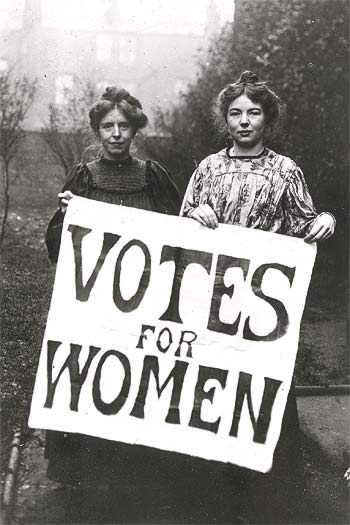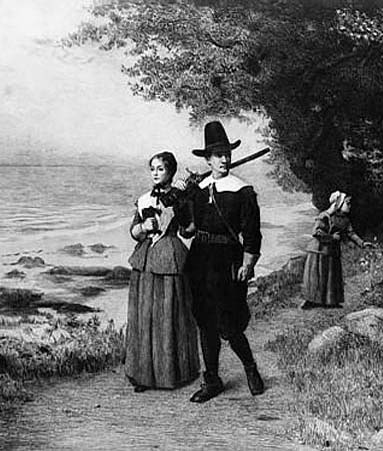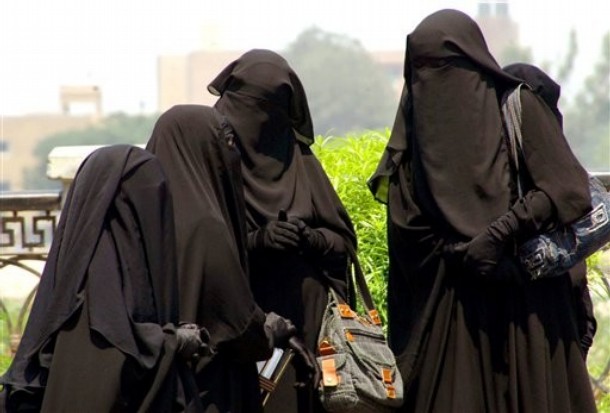 Marie Curie, the celebrated French physicist of Polish extraction, was a woman of high intelligence who both looked and acted like a genetically masculinized female. Note the broad forehead, receding hairline, and large cranial capacity typical of males.
Marie Curie, the celebrated French physicist of Polish extraction, was a woman of high intelligence who both looked and acted like a genetically masculinized female. Note the broad forehead, receding hairline, and large cranial capacity typical of males.
Madame Curie is the perfect example of an intellectually gifted woman who, by logical extension, was also highly virilized in both thought and action. Even from a cursory examination of her portraiture, it becomes immediately apparent from her obviously masculinised physiognomy that she was either suffering from congenital adrenal hyperplasia (CAH) or an epidemiological condition whose aetiology involves much of the complex symptomatology that underlies certain forms of excess ovarian androgenic hormone production. According to much of the historiography and biographical materials surrounding her life in the early twentieth century, it would seem that her life was one that was drenched in buckets of liquid testosterone. Many of the details surrounding her life seem to be consistent with the numerous clinical observations made by the late Johns Hopkins psychologist Dr. Money concerning highly masculinised women suffering from CAH. For one thing, the outward physical appearance of Madame Curie struck even the casual observer as overtly masculine: she was a woman with an unusually broad forehead and receding hairline, traits often indicative of male pattern baldness; on her throat could be observed the slight traces of an adam’s apple; she had unusually large hands and feet, as well as particularly lengthy digits that happen to be uncharacteristic for her sex. In addition, she also displayed very few of the secondary sex characteristics that are sex-typical for her gender: her breasts were largely underdeveloped and she had virtually no waist-to-hip ratio.
In true masculine style, she had little interest in cosmetics or fashion, prefering to wear the same black dress that she wore for days on end. She even managed to push her contempt for fashion to such extremes as to wear the same kind of clothing she was accustomed to wear in the laboratory to both of the Nobel Prize ceremonies she was obliged to attend.
Contrary to the champions of woman’s emancipation, she had no interest in being seen as a woman seeking equality with men. Her strongest desire was to be accepted as an honorary man who wished to be treated as a man on exclusively male terms. As indicated by her biographer Richard Reid, Madame Curie neither identified herself as a feminist nor did she have the slightest inclination to organize as one. In fact, she was contemptuous of feminism and believed that science, whether theoretical or experimental, could solve all of the world’s problems.
In the laboratory, she was known to display her masculine strength and energy by performing the hard physical labour of a stevedore. She was known as a woman capable of performing such physically strenuous tasks, many of which obviously exceed the physical capacities of the vast majority of women, because of the high muscle to body fat ratio and upper body muscular development that characterized so much of her individual physiology. The physicist Georges Urbain, having observed her working diligently in the laboratory, exclaimed in amazement that:
... he saw Madame Curie work like a man in the difficult treatments of great quantities of pitchblende.
Having established that Madame Curie was really a man in both thought and action, we must now try to understand why women of high intelligence always act and look like men. As les frères Goncourt once declared in a famous aphorism:
There are no women of genius; the women of genius are men.
From the biographical details of Madame Curie, we can see that the only near genius produced by the opposite sex was really a man in drag; a female of high intelligence is really a man trapped in the frigid dungeon of a woman’s body. According to Cesare Lombroso, the great Italian criminologist and physical anthropologist of the nineteenth century, all of the most illustrious women who have existed throughout history, consistent with their available portraiture and biographical details, were all highly masculinized women who thought, acted and felt like typical adult males; therefore, we should not be surprised if, numbered amongst these supposedly female luminaries, were many women who were intersexed or hermaphroditic in both phenotype and behavioural traits. In his bestseller La donna criminale, la prostituta e la donna normale, Lombroso writes:
Women of genius frequently have masculine appearances. Female genius can be explained as Darwin explained the colouration of birds that resemble the males of their species: by a confusion of secondary sexual characteristics produced by a mismatch of paternal and maternal heredity. One need only look at the pictures of women of genius of our day to realize that they seem to be men in disguise. (pg.83)
Concerning the causal relationship between masculinity and intelligence in women, one can readily see that Lombroso’s observations have enormous relevance for our understanding of the female psyche of today once they are stripped of their reliance on craniometric analysis and phrenological measurement. In fact, much of the data he collected from his own empirical observations of those extremely rare women of high intelligence can be readily explained through the discipline of modern endocrinology by invoking the well-known linkage between elevated levels of circulating androgens in the blood-stream and high intelligence and aggressiveness in women.There is a large body of evidence that indicates that female performance on tests of visual spatialization, the general mental capacity underlying both mathematical and analytical ability, and general intelligence are clearly determined by either the presence of fluctuating hormones throughout the menstrual cycle or abnormally high levels of testosterone brought on by the pre-natal masculinization of the female central nervous system.
A number of scientific investigations, most notably those conducted by E. Hampson in the early 1990s, have actually found that variations in the levels of circulating estradiol and progesterone throughout the menstrual cycle are responsible for modulating levels of female cognitive functioning; the researchers noted that whereas higher concentrations of estradiol and progesterone throughout the midluteal phase of the ovulatory cycle were responsible for a diminution of visuo-spatial ability, the correspondingly lower concentrations of both hormones at the onset of menstruation, relative to substantial levels of androstenedione (the most common female androgen), actually resulted in an improved ability to write tests evaluating both intelligence and the ability to rotate 3-dimensional geometric figures. It was established by Silverman and Phillips (1997) that female performance on the Mental Rotation Test (MRT) increased by almost 50% during menstruation due to the lower blood serum concentrations of estradiol and progesterone relative to elevated levels of androstenedione. In addition, it is a well-known fact that masculine women, who have elevated levels of testosterone, tend to demonstrate high intelligence throughout their lives, whereas those women (the overwhelming majority) who possess very little or no testosterone tend to be of mediocre or below average intellectual functioning. Consistent with this report, the researchers S.M. Resnick et al. (1986) administered both IQ and MRT tests to women affected with CAH, a condition characterized by high levels of circulating testosterone in the blood-stream, and women unaffected by the same condition. It was observed by Resnick et al. that the highly masculinised women tended to score significantly higher on both the IQ test and the MRT than the control group of normal women.
Futhermore, in a personal communication received by the writer earlier this year from English psychologist Richard Lynn, it was stated that women who display levels of intelligence outside the somewhat below average range of normal female intelligence tend to have been genetically masculinized during embryological development in the womb.
Thus, women who are intelligent always look and act like men, if not being essentially men in female disguise.
Males Exceed Females in All Things; or Are Men Really Better than Women?
Men are many times more complex than women in terms of personality and behaviour. In other words, what we have is female conservatism on the one hand and male progressivism on the other; because of the great complexity of male socio-sexual behaviour, men vary much more in terms of human trait possession than women. The mere recognition of greater male variability in terms of both mental, emotional, and physical characteristics is something that has been known by Charles Darwin and discussed at great length by the celebrated English sexologist Havelock Ellis. Concerning the principle of greater male variability as manifested in terms of genius, Havelock Ellis wrote in the book Man and Woman:
We must regard genius as an organic congenital abnormality ... and in nearly every department it is undeniably of more frequent occurrence among men than among women.... Genius is more common among men by virtue of the same general tendency by which idiocy is more common among men. The two facts are but two aspects of a larger zoological fact — the greater variability of the male.
Concerning the greater variational tendency of the male, Charles Darwin writes in Chapter VIII of the Descent of Man:
The great eagerness of the males has thus indirectly led to their much more frequently developing secondary sexual characters than the females. But the development of such characters would be much aided, if the males were more liable to vary than the females--as I concluded they were--after along study of domesticated animals. Von Nathusius, who has had very wide experience, is strongly of the same opinion. (22. 'Vortrage uberViehzucht,' 1872, p. 63.) Good evidence also in favour of this conclusioncan be produced by a comparison of the two sexes in mankind. During theNovara Expedition (23. 'Reise der Novara: Anthropolog. Theil,' 1867, ss.216-269. The results were calculated by Dr. Weisbach from measurements made by Drs. K. Scherzer and Schwarz. On the greater variability of themales of domesticated animals, see my 'Variation of Animals and Plantsunder Domestication,' vol. ii. 1868, p. 75.) a vast number of measurements was made of various parts of the body in different races, and the men werefound in almost every case to present a greater range of variation than thewomen; but I shall have to recur to this subject in a future chapter. Mr.J. Wood (24. 'Proceedings of the Royal Society,' vol. xvi. July 1868, pp.519 and 524.), who has carefully attended to the variation of the muscles in man, puts in italics the conclusion that "the greatest number ofabnormalities in each subject is found in the males." He had previously remarked that "altogether in 102 subjects, the varieties of redundancy were found to be half as many again as in females, contrasting widely with the greater frequency of deficiency in females before described." ProfessorMacalister likewise remarks (25. 'Proc. Royal Irish Academy,' vol. x.1868, p. 123.) that variations in the muscles "are probably more common inmales than females." Certain muscles which are not normally present in mankind are also more frequently developed in the male than in the female sex, although exceptions to this rule are said to occur. Dr. Burt Wilder(26. 'Massachusetts Medical Society,' vol. ii. No. 3, 1868, p. 9.) has tabulated the cases of 152 individuals with supernumerary digits, of which86 were males, and 39, or less than half, females, the remaining 27 being of unknown sex. It should not, however, be overlooked that women would more frequently endeavour to conceal a deformity of this kind than men. Again, Dr. L. Meyer asserts that the ears of man are more variable in formthan those of a woman. (27. 'Archiv fur Path. Anat. und Phys.' 1871, p.488.) Lastly the temperature is more variable in man than in woman. (28.The conclusions recently arrived at by Dr. J. Stockton Hough, on thetemperature of man, are given in the 'Pop. Sci. Review,' Jan. 1st, 1874, p.97.)The cause of the greater general variability in the male sex, than in the female is unknown, except in so far as secondary sexual characters are extraordinarily variable, and are usually confined to the males; and, as weshall presently see, this fact is, to a certain extent, intelligible.
Through the action of sexual and natural selection male animals have been rendered in very many instances widely different from their females; but independently of selection the two sexes, from differing constitutionally,tend to vary in a somewhat different manner. The female has to expend much organic matter in the formation of her ova, whereas the male expends much force in fierce contests with his rivals, in wandering about in search ofthe female, in exerting his voice, pouring out odoriferous secretions,etc.: and this expenditure is generally concentrated within a short period. The great vigour of the male during the season of love seems oftento intensify his colours, independently of any marked difference from thefemale. (29. Prof. Mantegazza is inclined to believe ('Lettera a CarloDarwin,' 'Archivio per l'Anthropologia,' 1871, p. 306) that the bright colours, common in so many male animals, are due to the presence and retention by them of the spermatic fluid; but this can hardly be the case;for many male birds, for instance young pheasants, become brightly coloured in the autumn of their first year.) In mankind, and even as low down inthe organic scale as in the Lepidoptera, the temperature of the body is higher in the male than in the female, accompanied in the case of man by aslower pulse. (30. For mankind, see Dr. J. Stockton Hough, whose conclusions are given in the 'Popular Science Review,' 1874, p. 97. See Girard's observations on the Lepidoptera, as given in the 'Zoological Record,' 1869, p. 347.) On the whole the expenditure of matter and force by the two sexes is probably nearly equal, though effected in very different ways and at different rates.
In a recent scientific paper by Strand, Deary, and Smith (2005), it was observed that:
The majority of studies have only considered sex differences in mean scores. However, in an often overlooked aspect of their review, Maccoby & Jacklin (1974) also concluded that males were more variable than females in mathematical and spatial abilities, although the sexes were equally variable in verbal ability. The issue of increased cognitive variability in males was previously discussed in detail by Heim (1970). Feingold (1992) analysed the results for the national standardisations of the DAT, the SAT, the WAIS, and the California Achievement tests. Males tended to be more variable than females in general knowledge, mechanical reasoning, quantitative ability, spatial visualisation, and spelling. There was little difference in variability for most verbal tests, short-term memory, non-verbal reasoning and perceptual speed (see Table 1 for DAT results). Hedges & Nowell (1995) reported that males had greater variance than females in all but two of the areas they considered, typically in the order of 3%-15% greater variability in boys’ scores than in girls’ scores. Cole (1997) also reported greater variability in boys’ scores on many of the tests analysed. For example, at age 17, males outnumbered females in the top 10% on maths tests by 1.5 to 1, and in science by 2 to 1.
Sex differences in spread or variability are important because they help to explain why males may outnumber females among the highest scoring individuals in tests that show only a small male advantage in mean score (Feingold, 1992; Hedges & Nowell, 1995; Nowell & Hedges, 1998). The obverse was also true: in Hedges & Nowell’s (1995) study boys outnumbered girls in the bottom 10% for those tests with only a small female advantage in mean score (e.g., reading comprehension, perceptual speed and associative memory).
The principle of male variance and monotonous female uniformity can be readily demonstrated on a mathematical level by constructing a Gaussian curve which plots the incidence of sexual dimorphism in male-female personality and behaviour. It will be seen from the standard normal distribution along the curve itself that not only do men have higher standard deviations than women but that men always have a tendency to cluster around the upper and lower extremes of the curve, whereas women, being generally homogeneous in both personality and behaviour, tend to have lower standard deviations and tend to gravitate towards the middle of the curve. Thus, there are more men of genius and high intelligence than women; women of talent and ability are extremely rare, and in many instances, nonexistent. In addition, there are more male daredevils than women; more male eccentrics than women; more males with tremendous athletic ability than women; more men with high levels of creativity than women; more men with a much greater sense of humour than women; more male criminals than women etc.
This is so because of three major reasons. Firstly, because alleles on both sex chromosomes present within the male genome are not coupled in the same dominant or recessive pairs as in the female; this means that there is nothing to mask the expression of gene replication errors in RNA transcription within the male lineage itself, ultimately producing a wide variation in both male temperament and phenotype. Secondly, men often bear the brunt of male-male competition for available females, and because of this are forced to become a kind of genetic filter for the species. Lastly, greater male variability is due to the presence of testosterone which enhances neuro-biological mechanisms for individual motivation within the male central nervous system, thus giving men a much greater drive to adapt and overcome whatever obstacles have been placed in their way by an unforgiving and merciless environment. All of these features are lacking in the human female, making women roughly homogeneous in both personality and behaviour across all times and places, all ethnicities and cultures.
In conclusion, by way of recapitulation, there is much greater variability in personality and behaviour amongst males, than amongst females; it is exceedingly difficult to construct a body of multivariate statistical analysis that can rigidly predetermine the biomechanical operation of male socio-sexual functioning; this is because men tend to cluster around the very extremes of any trait that is either expressed phenotypically/ genotypically, or one that is ultimately the natural by-product of socio-cultural adaptation. Thus, men tend to be all things in all times and places. However, women tend to be roughly homogeneous in both personality and behaviour.
The female of the species always tends to cluster around the middle of any Gaussian distribution that statistically calculates the relative probability of any trait being distributed throughout a given population demographic. Thus, because women tend to be relatively uniform in all places and times, they tend to operate as a collective organism functioning within the confines of an amorphous social network, the boundaries of which are ultimately defined by the biological parameters of the maternal instinct.

















